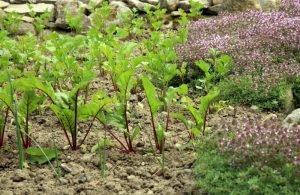Growing one of the world’s hottest peppers can be a rewarding challenge. Carolina Reaper tops the charts for heat and flavor. It thrives in warm, sunny spots. You’ll need to start seeds indoors and keep the soil moist. Careful monitoring ensures a healthy, spicy harvest.
Understanding Carolina Reaper: history and unique traits
Contents
- 1 Understanding Carolina Reaper: history and unique traits
- 1.1 Selecting and germinating quality seeds
- 1.2 Soil preparation and ideal planting conditions
- 1.3 Providing optimal temperature, light, and humidity
- 1.4 Watering schedules, feeding routines, and fertilization
- 1.5 Harvesting ripe peppers and handling their heat
- 1.6 Dishes and Sauces You Can Make with Carolina Reapers
- 2 Conclusion
The Carolina Reaper is famous for its staggering heat and vivid flavor. Growers prize it for both its challenge and unique taste.
History
Breeder Ed Currie of South Carolina developed the Carolina Reaper through careful cross-pollination of a Ghost Pepper and a Red Habanero. He selected for extreme heat and a distinct fruity note over several generations. Team PuckerButt trialed dozens of lines to refine pod size, wall thickness, and color consistency. In 2013,
Guinness named it the world’s hottest chili pepper, cementing its reputation among spice fans. Large seed banks soon offered it to home gardeners and commercial growers. Social media and hot-sauce challenges then spread their fame. Today, it remains a symbol of spicy achievement in kitchens and gardens worldwide.
Unique Traits
The Carolina Reaper delivers an average of 1.6 million Scoville Heat Units, with some pods exceeding 2 million SHU. It has a bright red, heavily wrinkled pod with a signature “stinger” tail. Beneath the fiery burn lies a surprising sweetness and tropical fruit note. Thick walls make it ideal for crafting intensely hot sauces, powders, and extracts.
Plants grow bushy, reaching 3 to 4 feet tall and yielding dozens of pods each season. They tolerate heat and moderate drought once established. Pods dry to preserve color, flavor, and potency. It produces a slow-build heat that peaks after a minute and can linger for several more. That lingering burn makes it a favorite in competitive eating and culinary experiments.

Selecting and germinating quality seeds
High-quality seeds and proper germination set the foundation for healthy pepper plants. Use these key actions to improve sprouting success.
- Source seeds from reputable suppliers to secure high germination rates and true-to-type traits. Reliable seed banks often offer customer feedback and germination guarantees.
- Perform a float test by soaking seeds in water for 15 minutes. Seeds that sink are viable and those that float can be discarded for better sprouting success.
- Sterilize seeds in a mild bleach or hydrogen peroxide solution. This step lowers surface pathogens and helps improve overall germination rates.
- Pre-soak seeds in warm water for 12 to 24 hours. This softens the seed coat and jumpstarts germination, leading to faster, more uniform sprouting.
- Use seed-start trays lined with damp paper towels or germination mix. Covering them with clear domes maintains humidity at around 75 to 85 percent for optimal sprouting.
Soil preparation and ideal planting conditions
Rich, well-structured soil is crucial for vigorous growth. Follow these steps to create ideal planting conditions.
- Test soil pH and aim for slightly acidic values around 6.0 to 6.8. Balanced acidity helps roots absorb nutrients effectively.
- Mix aged compost or well-rotted manure into soil at a depth of six inches. This boosts fertility, structure, and beneficial microbial life.
- Blend coarse sand or perlite into the mix at a rate of 15 to 25 percent. Improved drainage prevents waterlogging and root rot.
- Add a slow-release organic fertilizer formulated for vegetables at planting. Follow label instructions to supply nitrogen, phosphorus, and potassium throughout the growing season.
- Spread two inches of organic mulch like straw or leaf litter around plants to conserve moisture, control weeds, and regulate soil temperature.
- Use raised beds or containers with drainage holes when soil is compacted or poorly drained. Proper containers let you control soil composition and root health.
Providing optimal temperature, light, and humidity
Peppers thrive under consistent warmth, bright light, and balanced humidity. Use these tips to maintain the perfect growing environment.
- Maintain daytime temperatures between 75°F and 85°F and keep nights above 70°F. Use heat mats or greenhouse heaters to support steady, stress-free growth.
- Provide at least 12 hours of direct light daily. Position plants in full sun or use adjustable grow lights to prevent leggy, weak stems.
- Aim for 50 to 70 percent humidity during seed germination and early growth. Use misting, humidity domes, or small humidifiers to maintain moisture levels.
- Gradually lower humidity to around 40 to 50 percent as plants mature outdoors. Acclimating seedlings prevents shock when transplanted to open-air conditions.
- Ensure good air circulation by installing fans or opening vents in greenhouses. Proper airflow reduces fungal risks and keeps leaves dry after watering.
- Track conditions with a digital thermometer and hygrometer placed at canopy level. Accurate monitoring lets you adjust settings quickly for optimal plant health.
Watering schedules, feeding routines, and fertilization
Balanced watering and feeding routines support strong development and bold flavor. These guidelines ensure your plants get hydration and nutrients at the right times.
- Inspect soil daily and water deeply once the top inch feels dry. This encourages roots to grow downward and improves drought resilience.
- Water early in the morning to reduce evaporation and allow foliage to dry before nightfall. Dry leaves help prevent disease and mold growth.
- Apply a balanced 10-10-10 fertilizer at first flowering to support initial fruit set. This promotes strong pod development and overall plant health.
- Side-dress plants with compost or organic mulch every four weeks. Slowly released nutrients from mulch improve soil fertility and microbial health.
- Rinse potted plants thoroughly with plain water each month. This flushes excess salts and prevents root tip burn from fertilizer buildup.
- Observe leaf color and vigor. Yellowing leaves indicate overfeeding, so cut back nutrient applications. Conversely, slow growth may require a mild nutrient boost.

Harvesting ripe peppers and handling their heat
Timing matters when harvesting ripe Carolina Reaper peppers. They’re easy to spot when pods turn deep red and feel firm.
- Check peppers daily as they mature. Pods change from green to deep red over several weeks. Harvest at peak color for best flavor and potency.
- Use sharp scissors or pruning shears to snip fruit stems cleanly. Avoid pulling pods by hand to protect the plant and prevent stem damage.
- Wear disposable gloves when handling pods. The oils can irritate skin and eyes. Consider using goggles to guard against accidental splashes.
- Place harvested peppers in a basket or tray with good airflow. Avoid stacking pods too deeply. Good air circulation prevents mold during storage.
- Rinse gloves and tools after harvesting to remove capsaicin residue. Clean hands thoroughly before touching face or food items. Capsaicin can linger long after harvest.
Dishes and Sauces You Can Make with Carolina Reapers
Carolina Reapers deliver unforgettable heat that transforms simple recipes into bold statements. You’ll master five standout creations that showcase their fruity burn.
Carolina Reaper Hot Sauce
Start by toasting six fresh Carolina Reaper pods until they blister. Remove stems and chop them. Combine in a blender with two cloves of garlic, a half cup of apple cider vinegar, a quarter cup sugar, and a pinch of salt. Blend until smooth.
Simmer for five minutes, then bottle and refrigerate. You’re left with a vibrant, tangy hot sauce that packs a fruity punch. Drizzle over tacos, sandwiches, or grilled veggies.
Reaper-Infused Barbecue Glaze
Make a spicy-sweet glaze by whisking chopped Carolina Reaper pods with two tablespoons of honey, a quarter cup of ketchup, two tablespoons soy sauce, one tablespoon apple cider vinegar, one grated garlic clove, and a pinch of smoked paprika.
Simmer until thick and glossy for eight to ten minutes. Brush on ribs or grilled chicken in the last five minutes of cooking. The glaze caramelizes beautifully and adds a deep, smoky heat you won’t forget.
Scorching Reaper Salsa Roja
Combine three diced tomatoes, one small onion, two jalapeños (optional), and two minced Carolina Reaper pods in a bowl. Stir in two tablespoons fresh lime juice, a handful of chopped cilantro, and a pinch of salt.
Let flavors meld for at least one hour in the fridge. Serve with chips or tacos. This salsa offers a fiery kick that builds slowly and leaves a lasting warmth on the palate.

Fiery Chili Oil with Reaper
Heat half a cup of neutral oil in a small saucepan until shimmering. Add two sliced Carolina Reaper pods and one star anise. Lower the heat and simmer for five minutes to infuse flavor.
Remove pods and star anise, then stir in half a teaspoon of crushed red pepper flakes. Cool completely before bottling. Drizzle over noodles, dumplings, or stir-fries for a robust, long-lasting heat and glossy finish.
Mango and Reaper Chutney
Dice one ripe mango and two small Carolina Reaper pods. Combine in a saucepan with a quarter cup brown sugar, two tablespoons white vinegar, one teaspoon grated ginger, and a pinch of salt.
Bring to a gentle boil, then simmer for ten minutes until thick and jam-like. Cool before serving. This chutney balances sweetness, tang, and intense heat. It pairs beautifully with grilled meats, cheese platters, and spicy curries.
Conclusion
Growing Carolina Reaper peppers demands patience and attention. Providing the right soil, water, and light helps plants thrive. Harvest at peak ripeness to enjoy maximum heat and flavor. Homegrown Carolina Reapers add a bold kick to any dish.
Caroline Reapers may have too much of a kick for most people. Check out our guide on growing regular peppers if you want a milder spice.






